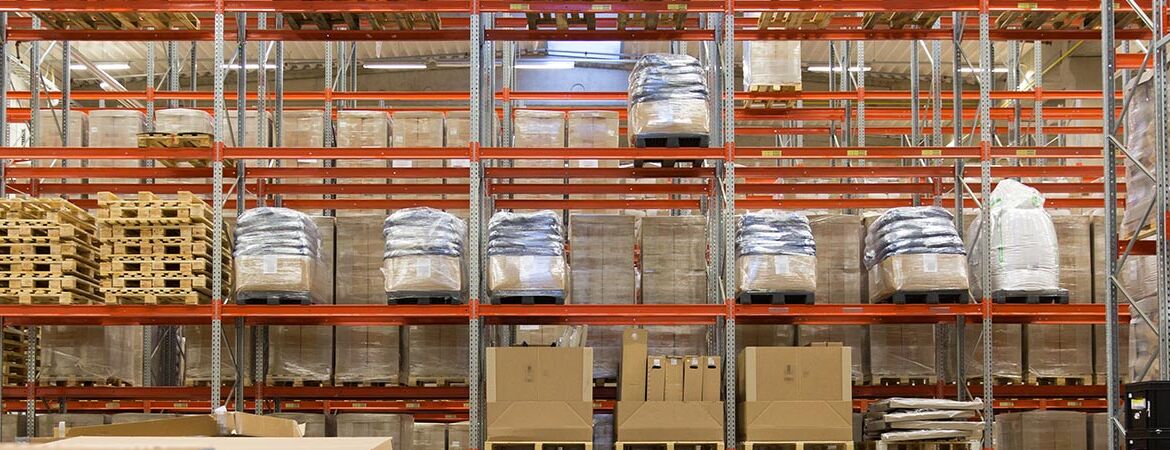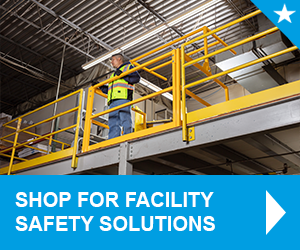
In July 2023, the Labor Department announced a national emphasis program to reduce common safety violations at warehouses, distribution centers and related facilities. It will involve increased inspections and prevent the most common safety hazards occurring in one of the fastest growing industries. The program, “aimed at reducing, preventing workplace hazards in warehouses and distribution centers,” will last three years.
During that time, warehouse leadership and their teams can expect sharper scrutiny from compliance regulators and should take actions now to scrutinize and upgrade their fall protection systems as needed. Here, we discuss how safety managers and facility owners can prepare and outline the ways modular rails for machinery, walkways and more can bring facilities into greater compliance while improving facility operations.
What the Latest National Emphasis Program Entails
Throughout the program’s three-year period, OSHA will conduct comprehensive safety inspections at warehouses, distribution centers and retailers. The primary focus will be on hazards related to:
- Industrial vehicles
- Storage areas
- Loading zones
- Walking and working surfaces
- Egress and fire protection measures
While the scope of this national emphasis program is on warehousing, distribution and storage operations, the OSHA announcement stated an additional possibility – as always – of expanding inspections at facilities as the need arises. As falls are one of the leading causes of workplace injuries, inspectors will likely have their eye out for any fall hazards, including staircases, ladders and dangerous equipment.
How to Prepare
During any anticipated rise in compliance inspections, safety managers and facility operators should plan an internal audit of their workplace safety policies and equipment. Doing so instills a renewed perspective that can reveal potential gaps in facility-wide safety that might otherwise go overlooked.
Falls are one of the leading workplace injuries overall, so your fall protection systems should receive a high priority. Consider it an opportunity to renew your commitment to keeping workers safe. The fall protection devices we’ll discuss below can also protect valuable company assets, including mobile equipment, fixed machinery and the property itself.
Optimize Your Facility’s Fall Protection Systems
When scrutinizing your facility, these common fall hazard issues deserve careful consideration:
- Maintaining a continuous railing system on walking and working surfaces
- OSHA machine guarding for dangerous equipment
- Keeping staff and industrial vehicles separate
- Securing an enclosed space around ladders and stairways with railings and gates
When comparing solutions for these and other safety issues, always reference the latest local, OSHA and CCOHS regulations affecting your location. It’s also important to select passive fall protection equipment that fulfills the maximum number of regulatory requirements. Later, we’ll discuss the importance of maximizing fall safety beyond minimum compliance standards, especially with passive fall protection equipment.
Modular Guardrail Systems
Modular safety rail systems can maximize protection, regulatory compliance and efficiency throughout a warehouse or distribution center. The beauty of modular guardrails is that they fulfill a long list of compliance requirements while also enhancing worker productivity. Their versatility and user-friendliness further bolster their safety, as employees know that they can adjust the environment to suit their needs while remaining in full compliance.
When staff is unable to use or modify their railing systems with ease (or at all), it sends ripple effects throughout company operations. It can even inadvertently lead to a mindset seeking workarounds or avoiding important safety tasks, contributing to workplace dynamics that send subtle red flags to OSHA regulators.
For example, when a machine with a dangerous equipment designation requires ongoing maintenance, a permanent OSHA machine guarding system can frustrate workers, even making them less careful. With modular rails for machinery, technicians can simply change a railing to a gate in a matter of seconds and remain in compliance.
There are innumerable instances where modular safety rail systems can improve warehouse safety, such as:
- Increasing a guardrail’s perimeter to accommodate larger equipment or industrial vehicle operations
- Decreasing that perimeter again, in order to increase available working space
- Converting upper-level storage or unused space into a working surface
- Easily adapting railing to changes in walking or working surface configurations
- Opening up previously inaccessible areas newly secured by other means
- Down-sizing or moving operations, as it’s incredibly easy to store and move modular guardrails
- Quickly adapting guardrails to hoisting areas, which can frequently change
In all of these circumstances, non-customizable guardrails would result in costly property modifications and extensive labor. Instead, a modular railing system can be disassembled and/or moved within minutes, alleviating workflows without compromising on compliance.
Safety Gates for Machine Guarding, Ladders, and Stairways
Swing safety gates are also essential to warehouse and distribution center safety. As mentioned, gates and modular rails for machinery together improve accessibility while fulfilling OSHA machine guarding requirements. For ladder and stairway access points, safety gates reduce risk of falls by accomplishing two things:
- Preventing items from being stored or placed near the stairway or ladder, even temporarily
- Ensuring employees pause and assess the space before ascending/descending.
If employees are in a rush, the gate forces them to pause and take stock of the situation. Because the gates are there in the first place, the area around the entry points are much less likely to become cluttered.
In some cases, gates are required; in others, they’re a user-friendly way to fulfill more open-ended requirements. It’s a good example of when a company might want to set their goals higher than just maintaining compliance and opt for the best. By maximizing ease of use with precision-engineered safety gates, your staff will appreciate the facility’s commitment to both fall protection and smoother working conditions.
Now is the Time to Maximize Warehouse Fall Safety
As commodity shipments throughout the world continually increase, so too does the warehousing and distribution sector. It’s a good time to consider how to bolster your workplace safety while minimizing finable offenses. Upgrading your fall protection systems can not only bring your facility into compliance but maximize staff safety and workplace efficiency.
Because warehouse work involves numerous separate tasks, every bit of streamlining makes a world of difference. Fabenco, a Tractel company, has over 45 years of experience in an industry that’s constantly changing. If you have any questions about our adaptable, versatile, and American made modular safety rail systems and self-closing safety gates, contact Fabenco today.





